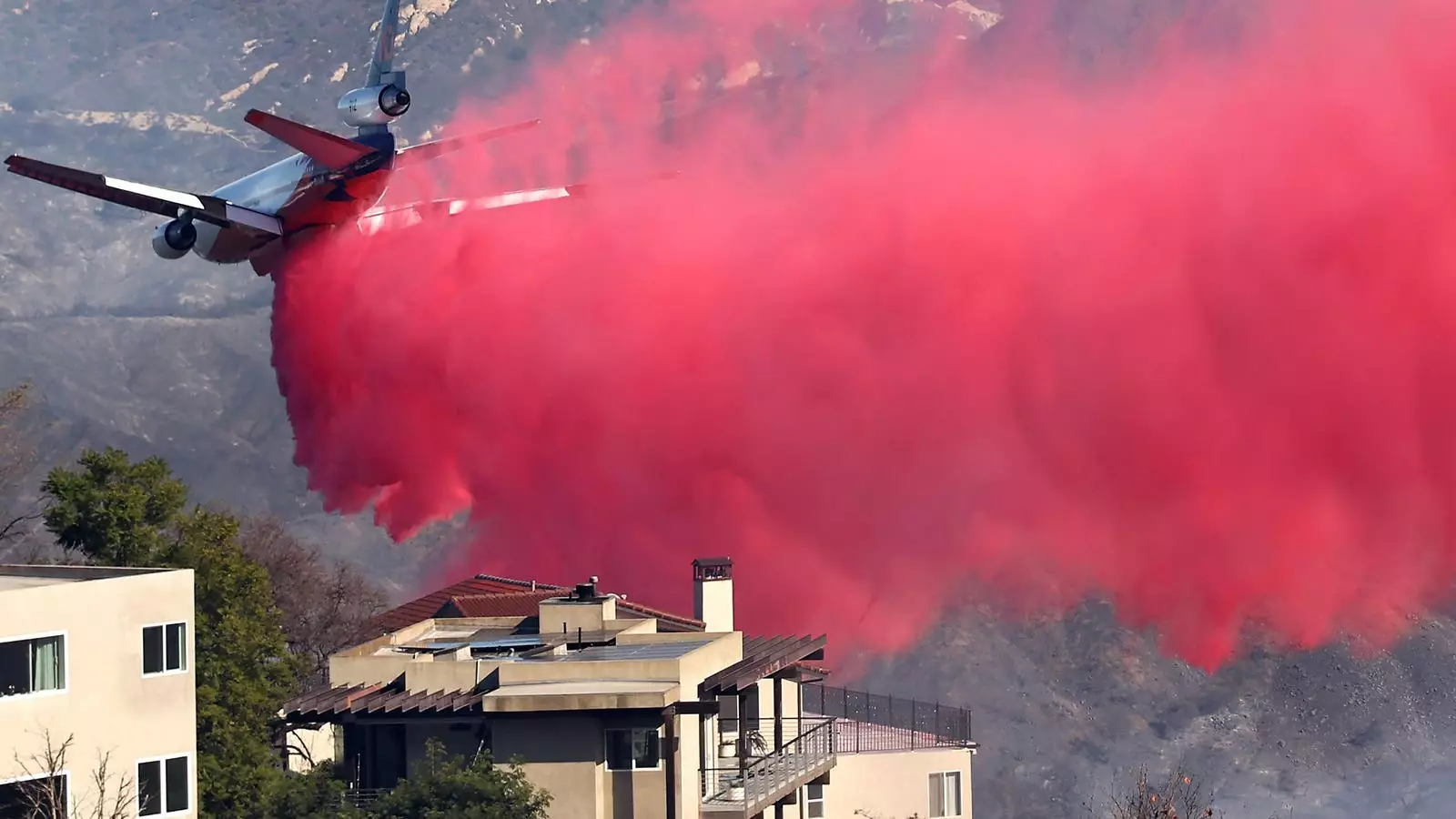In recent years, wildfires, particularly those observed in the Los Angeles area, have erupted with frightening intensity, creating not only immediate devastation but also long-term health concerns. The United States Department of Agriculture (USDA) has issued dire warnings about the implications of wildfire smoke on food safety. Smoke can travel vast distances, potentially affecting homes situated hundreds or even thousands of miles away from the flames. This phenomenon raises an important question: how do wildfires compromise the food we consume? As smoke rises into the stratosphere and disperses through the atmosphere, it can carry with it a cocktail of harmful gases and particulate matter capable of contaminating our food supply.
When wildfires burn, they don’t just consume organic matter but also synthetic materials like plastics and treated wood, releasing toxins into the air. According to Mark Davidson, a prominent expert in air filtration systems, smoke from wildfires poses greater risks than typical air pollution. The fine particulate matter (PM2.5) generated from these flames accounts for over 90% of the smoke’s mass, making it particularly dangerous. These ultra-fine particles can infiltrate common food packaging, such as plastic wraps or cardboard boxes. Consequently, food that appears untouched may still be hazardous. It is alarming to note that when these particles settle on food items, traditional cleaning methods often prove inadequate for ensuring safety.
The presence of toxic compounds in smoke can lead to serious health risks if consumed unknowingly. The melting point of these toxins allows them to reenter the air and penetrate our homes, especially when air circulation systems lack adequate filtration. Health authorities recommend that food exposed to smoke or ash should be disposed of, particularly items packaged in non-airtight containers. While glass or metal containers may be cleaned and reused, exposure to wildfire smoke raises questions about the long-term safety of food stored in various types of packaging.
Rarely discussed in mainstream media, the chemical aftermath of wildfires can cause far-reaching implications. Compounds released during the combustion of plastic can become gaseous toxins, while other contaminants bind to particulate matter, leading to dangerous levels of chemical exposure. It is crucial for individuals to think about their food storage solutions in the wake of such environmental disasters.
In addition to chemical contaminants, wildfires can exacerbate the risk of foodborne illnesses by spreading microbial pathogens. Recent research published in Ecosphere indicates that smoke can carry not only harmful gases but also various types of bacteria and fungi. In one experiment where petri dishes were exposed to smoke from a wildfire, researchers observed the growth of over 70 types of microorganisms, predominantly in areas close to the fire. This finding highlights the potential for wildfires to facilitate the transmission of heat-tolerant microbes that pose a direct threat to public health.
Barbara Brown, a food safety expert, has cautioned consumers about checking their pantries and discarding any items that have been exposed to wildfire smoke. This includes everything from packed flour to spices stored in non-airtight containers. The risks are not limited to dry goods; refrigerated items like meats and dairy also pose risks when they exceed safety temperatures due to power outages caused by fire-related disruptions.
As the alarming scope of the recent wildfires unfolds, it is clear that a need for improved disaster preparedness is essential. Residents in fire-prone areas must develop plans for protecting their food supply in the event of wildfires. This includes storing items wisely, discovering methods to clean non-aerated containers, and being vigilant about food safety practices post-disaster.
Furthermore, it highlights the interconnectedness of climate change, food safety, and public health. As these natural disasters become increasingly common, communities must strengthen their response strategies to mitigate the risks. Proactive measures can be taken to enhance air filtration systems in homes and public facilities, ensuring a layer of protection against airborne contaminants.
The recent wildfires that ravaged Los Angeles and their implications extend far beyond immediate devastation. They highlight the fragility of our food systems and the urgent need for public awareness of food safety in the context of climate-related disasters. As we grapple with these rising risks, we must all become advocates for robust disaster preparedness, ensuring that our communities are resilient in the face of environmental challenges. Together, we can safeguard our health and food systems while fostering a future capable of withstanding the repercussions of climate change.


Leave a Reply